OMG it really felt like Jamie could pop up any time. What would he make of my cerise mac?
For those who don’t know what I am talking about: “Outlander” book and TV series


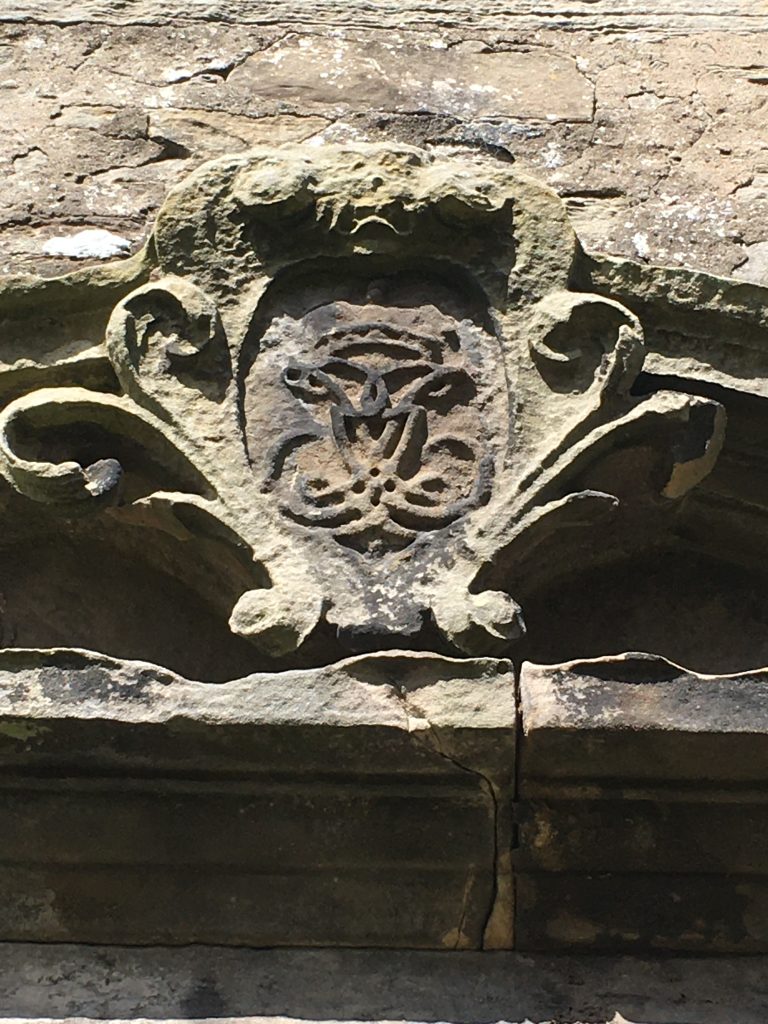

Only 30 minutes walk from my hotel, crossing two 4-6 lane roads with traffic that make London and NYC look empty. The air pollution is not necessarily visible but I can feel it in my throat.
Just before the palace complex is a hidden oasis underground. A huge marble tiled hall with benches and restrooms – fully air conditioned. Pure bliss. I stopped there whenever my way took me past just to bring down my body temperature. On the walls hang blown-up posters of the palace and Bangkok through the ages.
At the entrance to the palace many guides try to sell their services. In hindsight it would have been good to have somebody explain the stories behind the beautiful paintings. Next time. I like to explore at my own pace.
Security is high, soldiers in immaculate uniforms everywhere. Tourists in shoulder and knee free attire are directed to the stalls outside to buy appropriate clothing. I find it astonishing that people don’t read up customs in countries they visit. Or just employ common sense. You wouldn’t go to church like that, would you?
Once inside the palace walls my senses got flooded with exotic architecture, gold everywhere, colourful glittery mosaics, and Asians dressed up in old traditional clothing. The King and I sprang to mind.
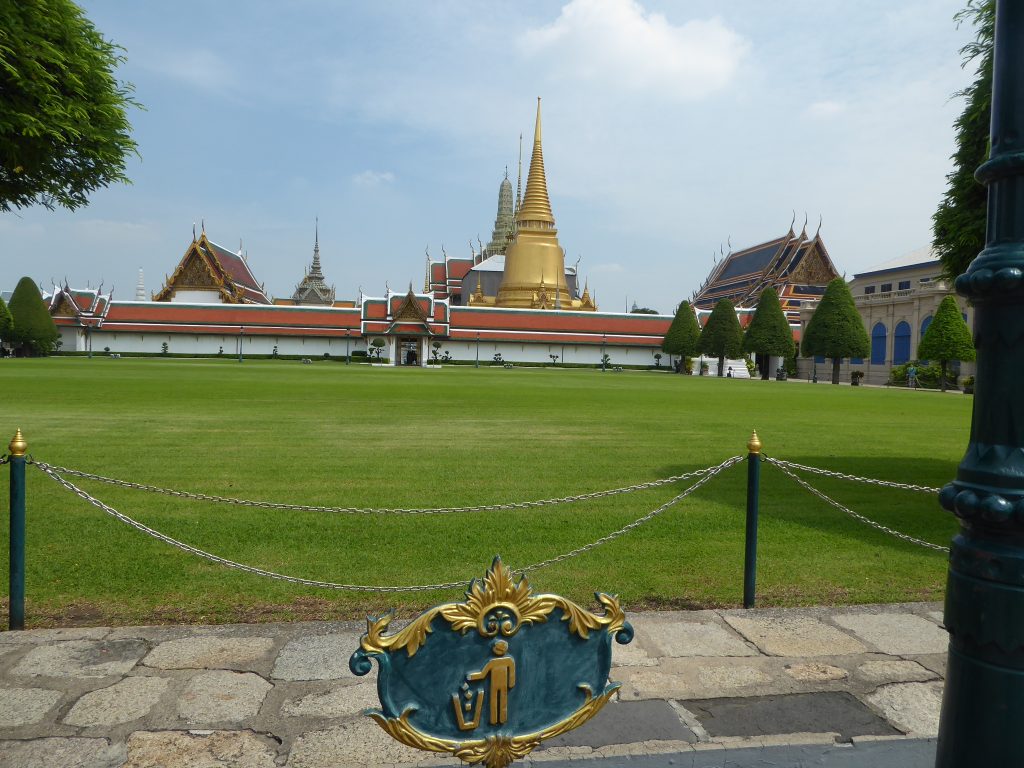






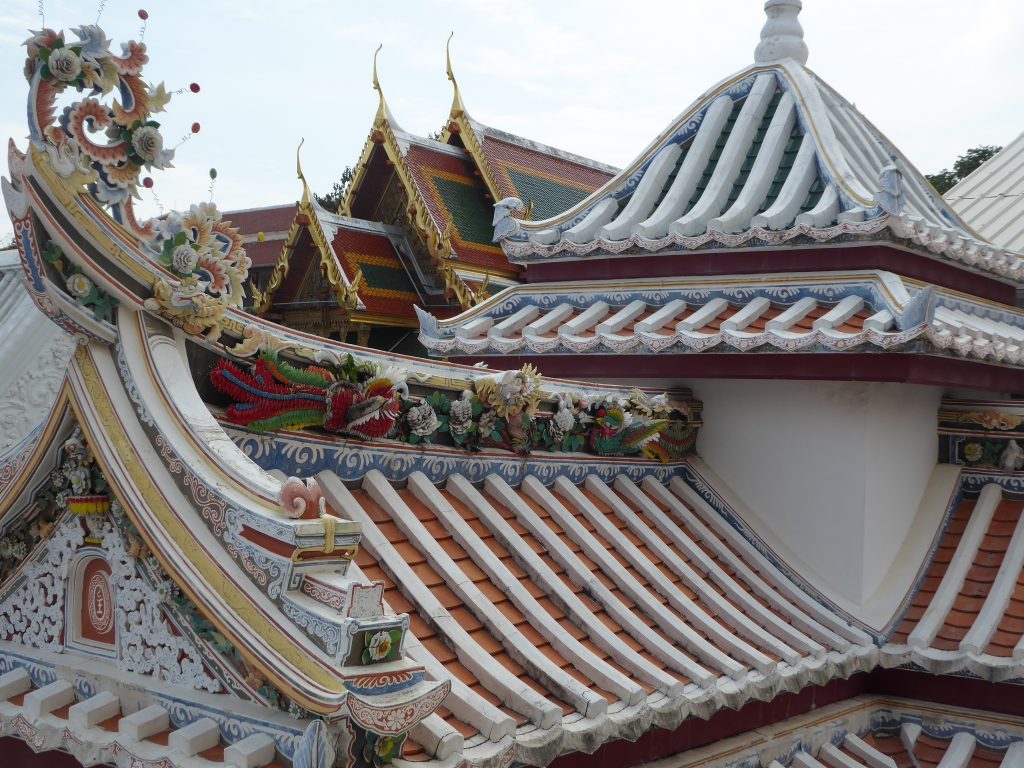
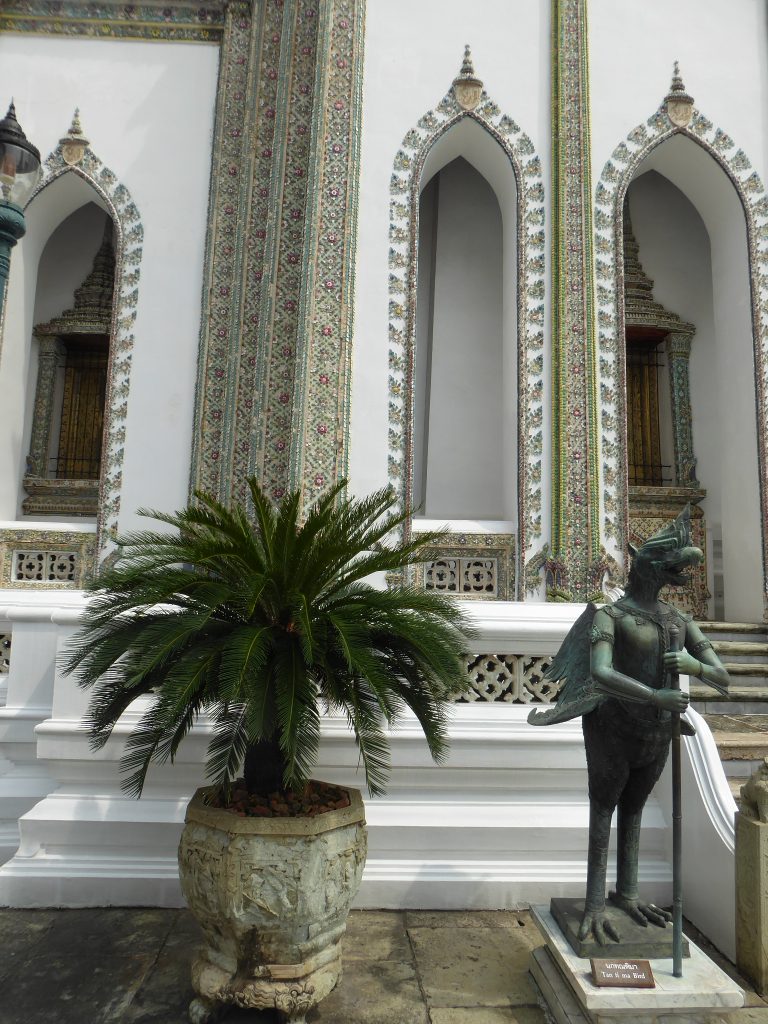
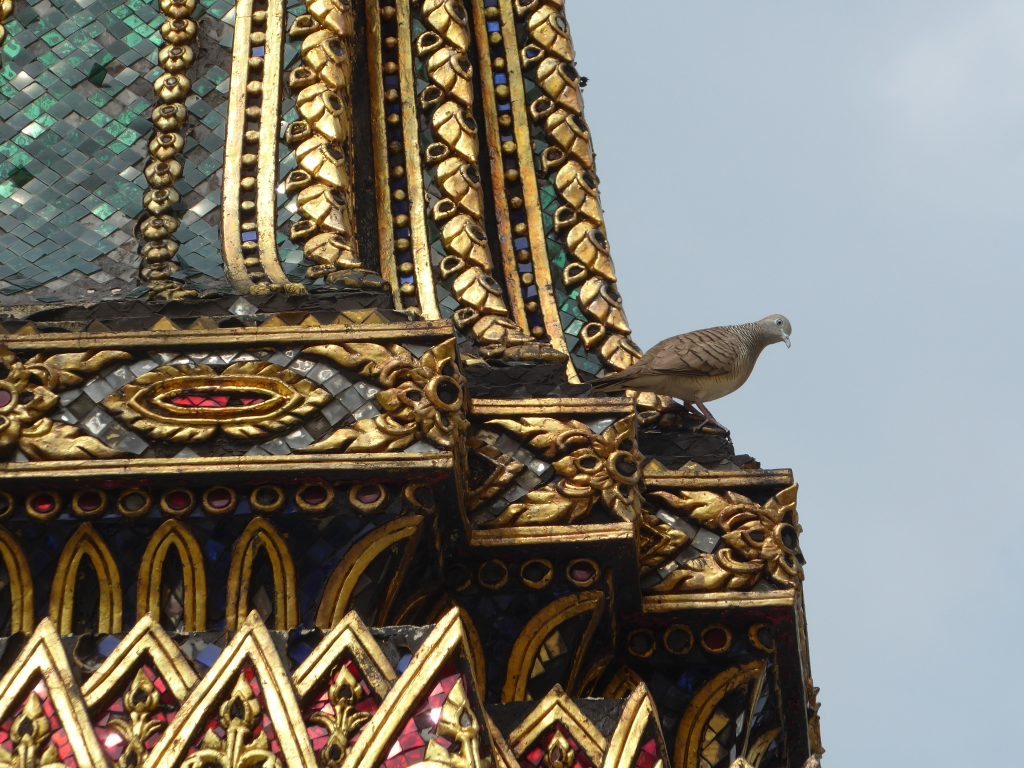


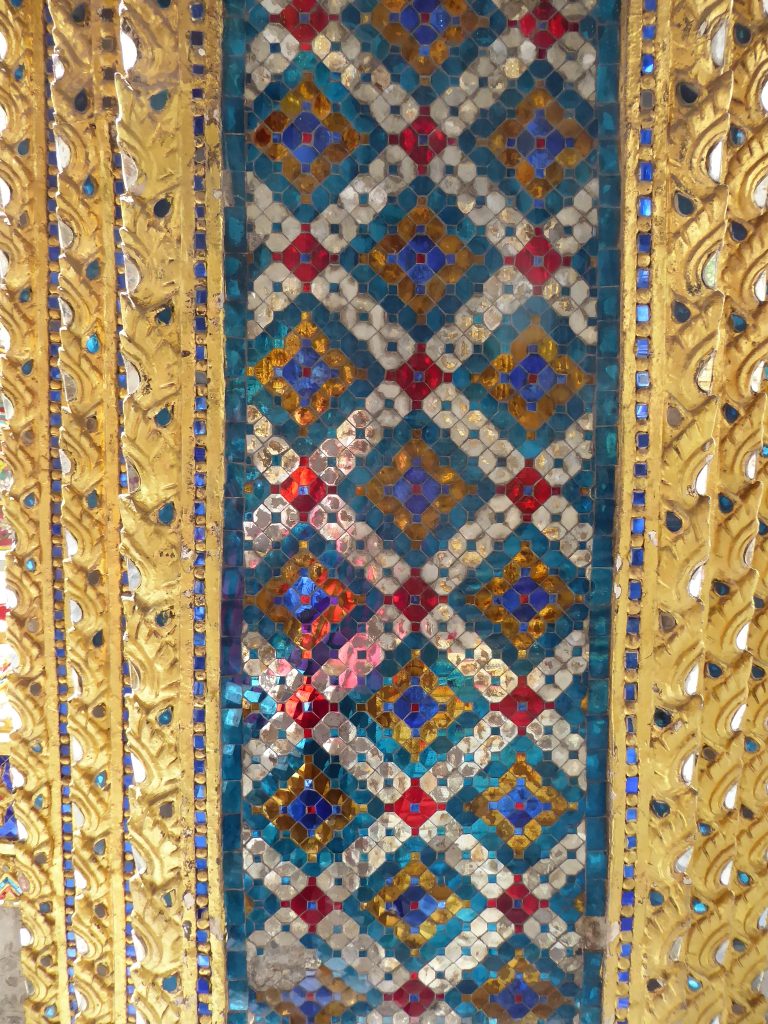
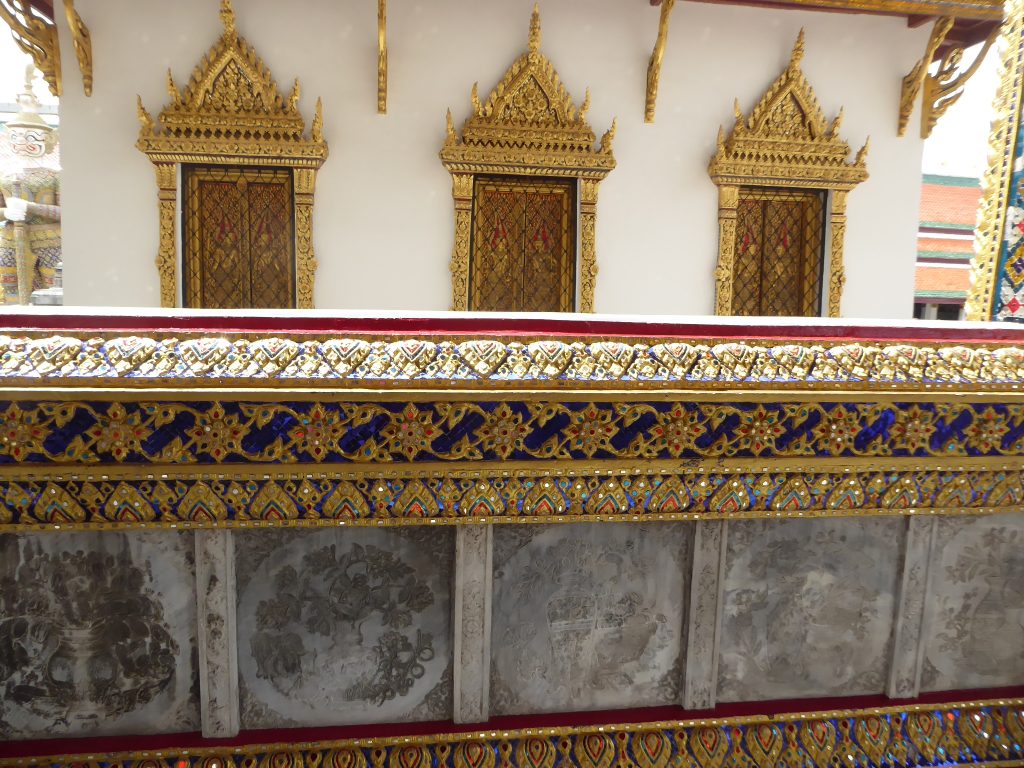
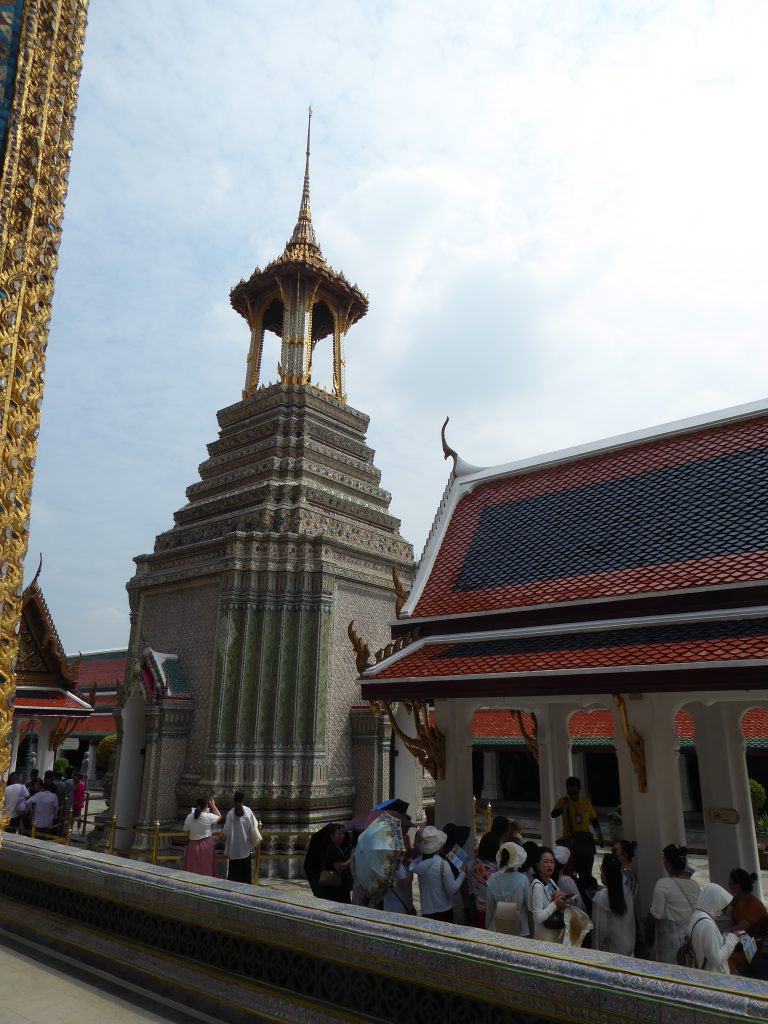

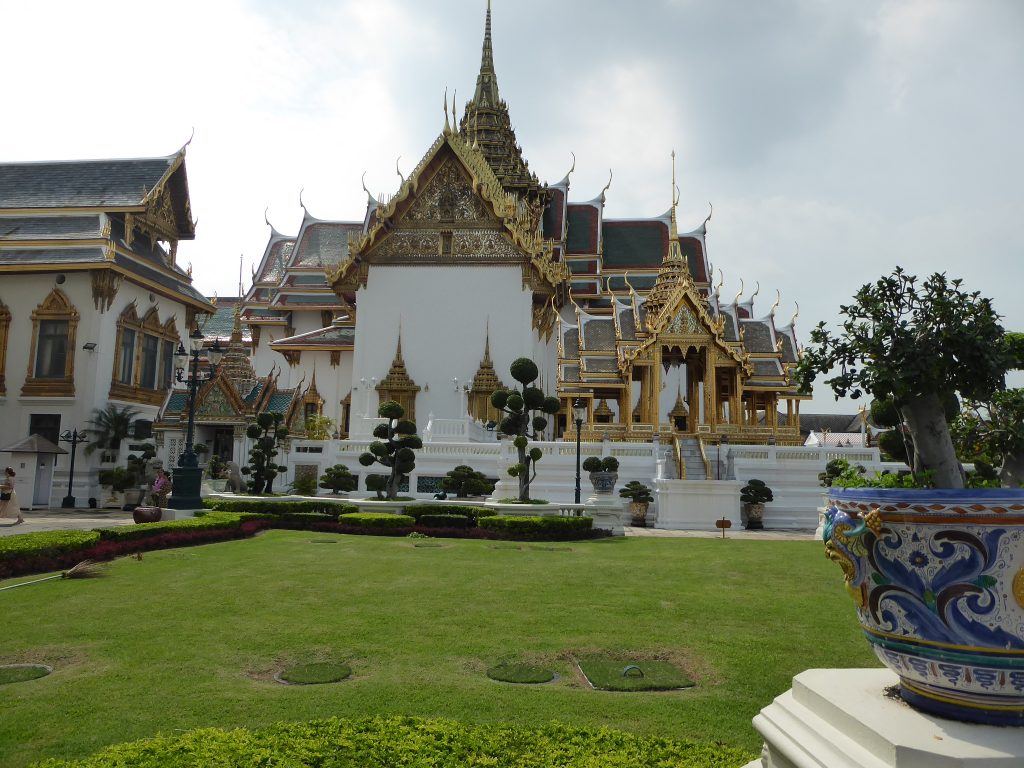
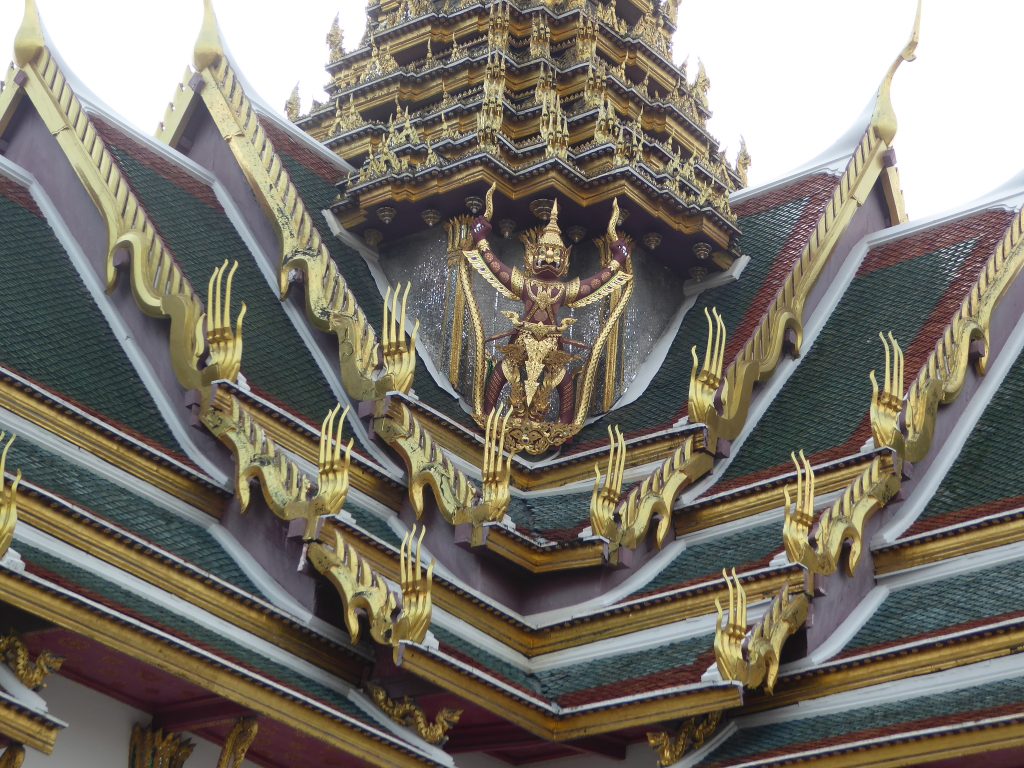
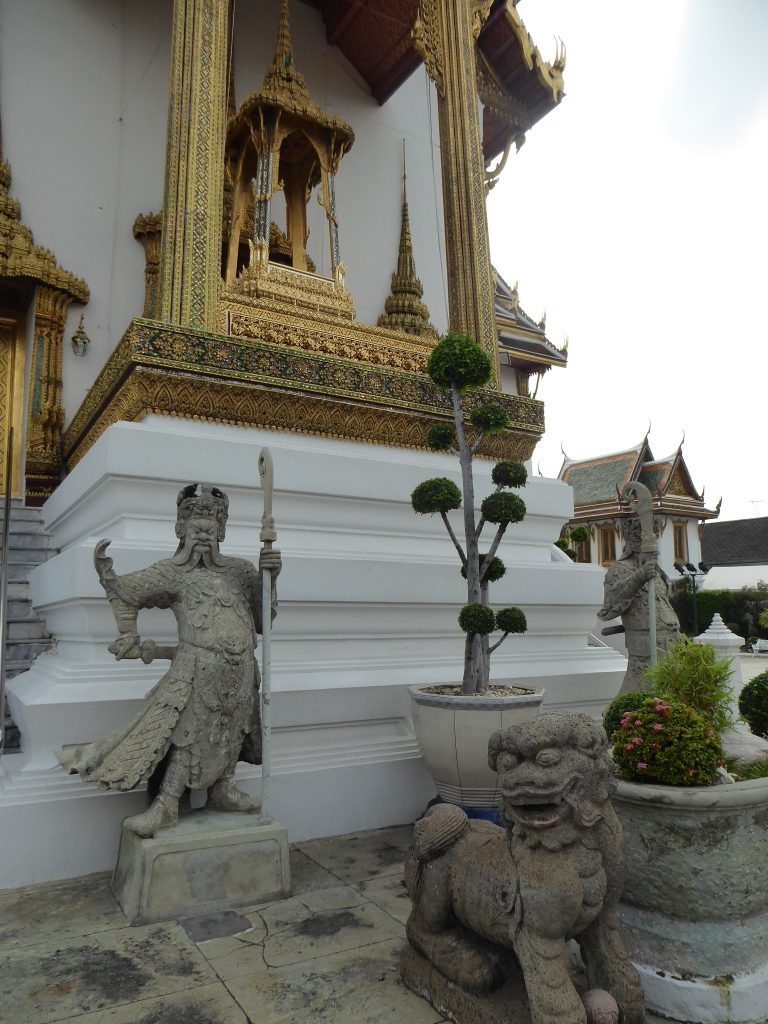
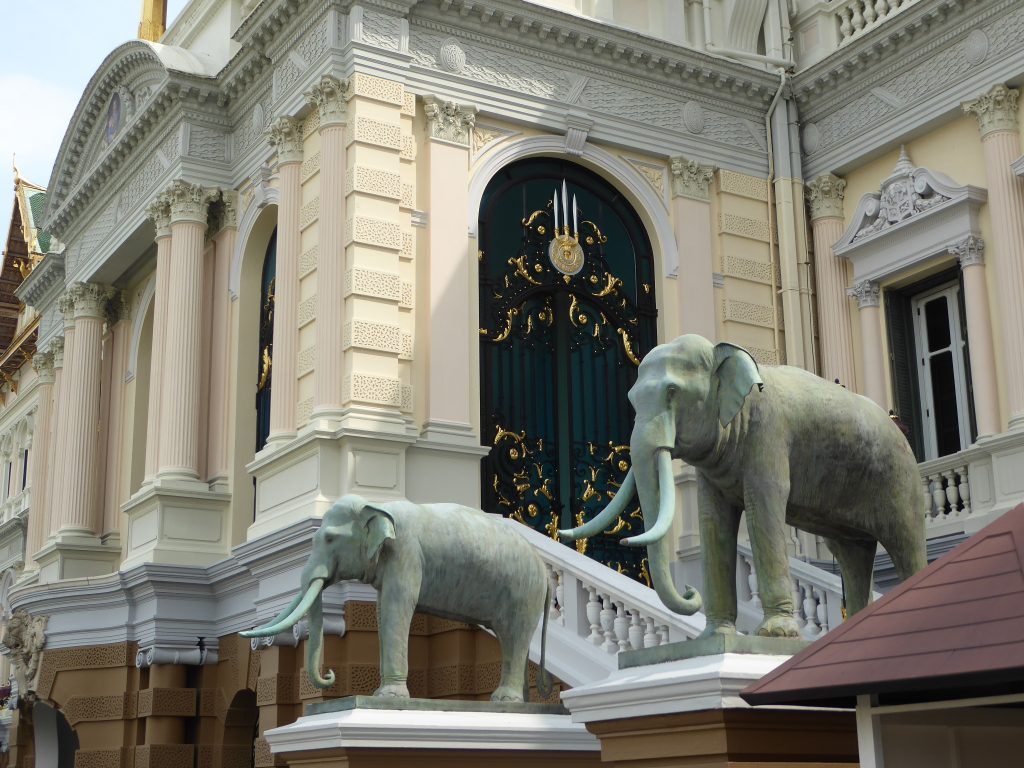
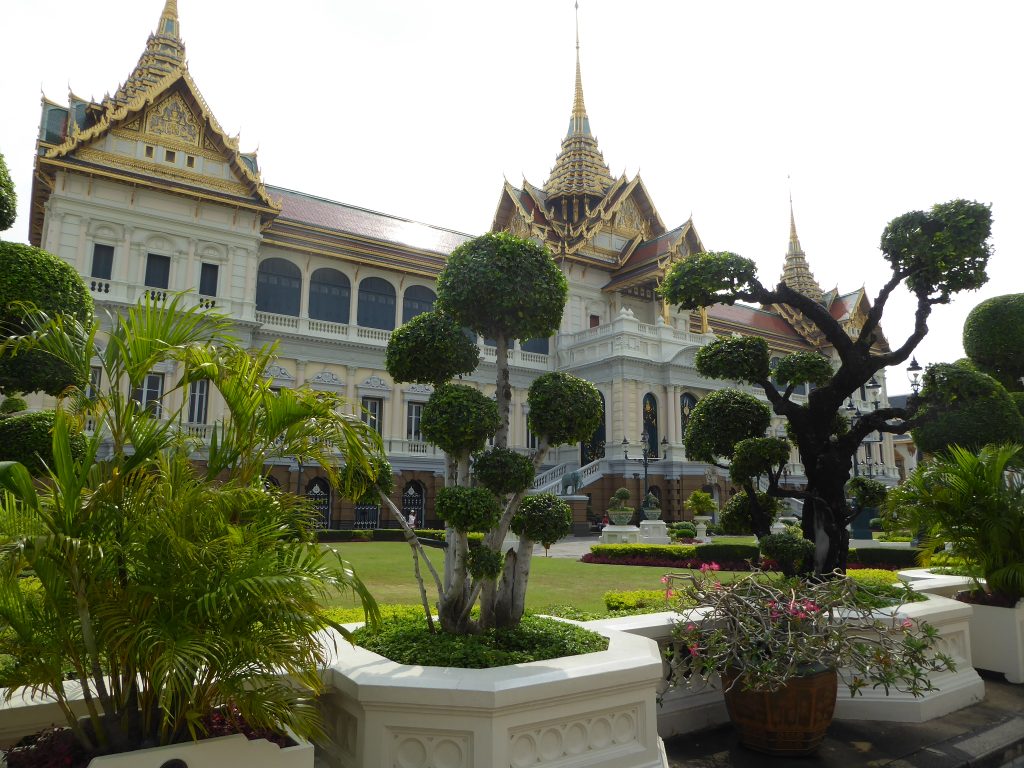
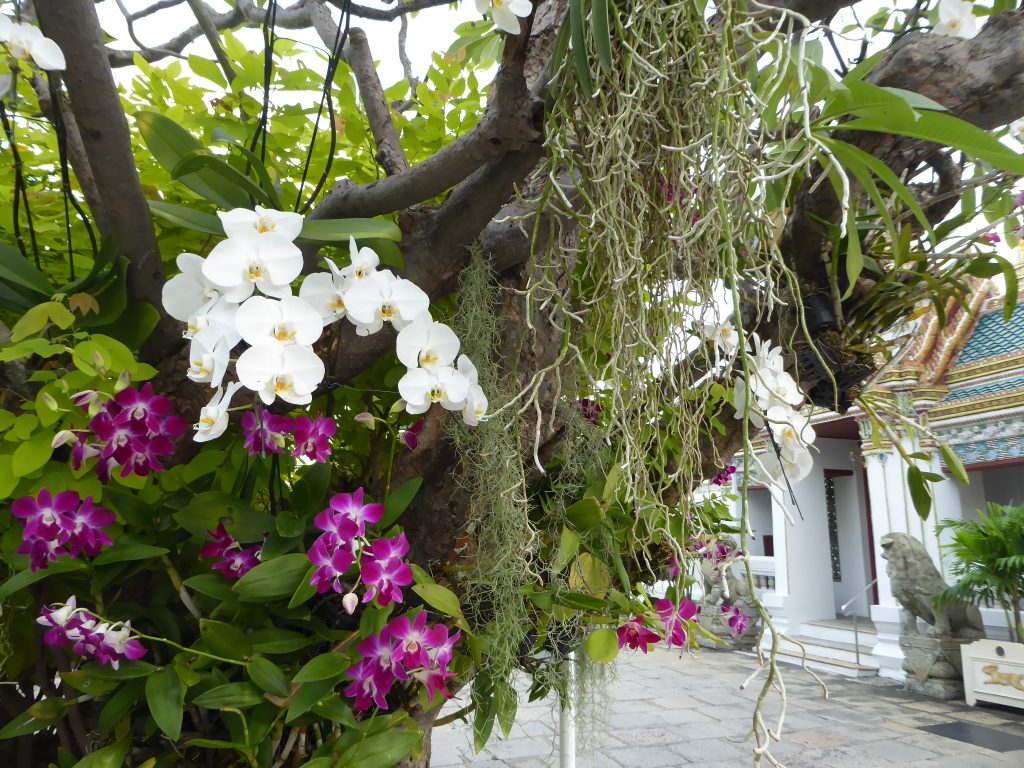
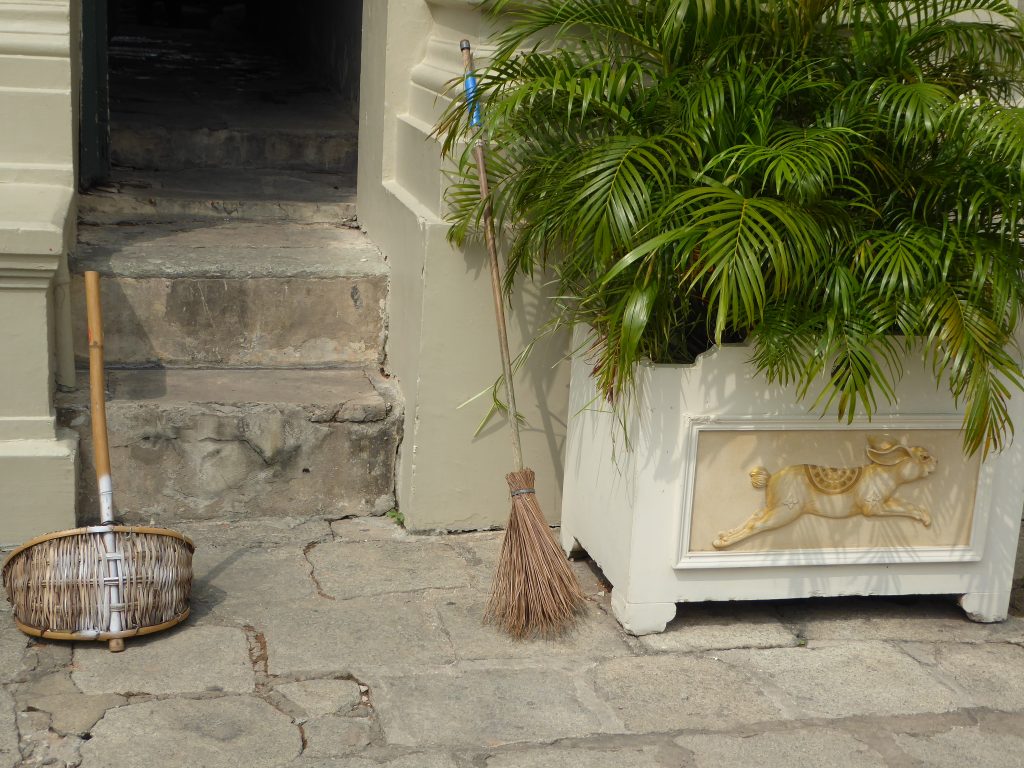
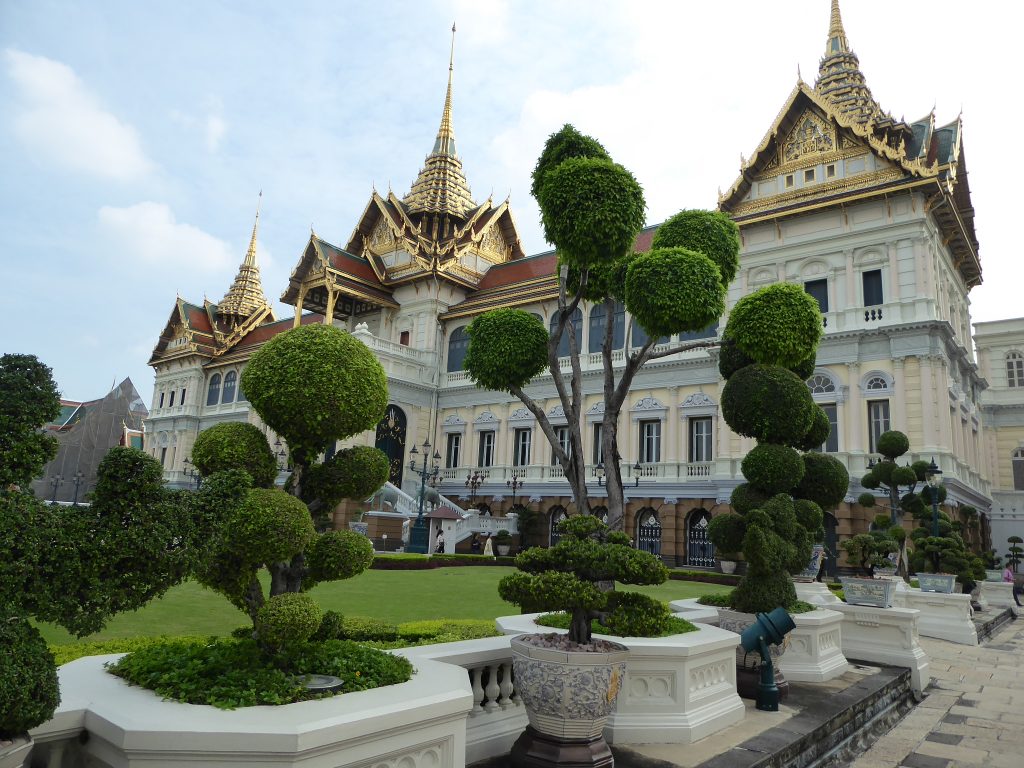
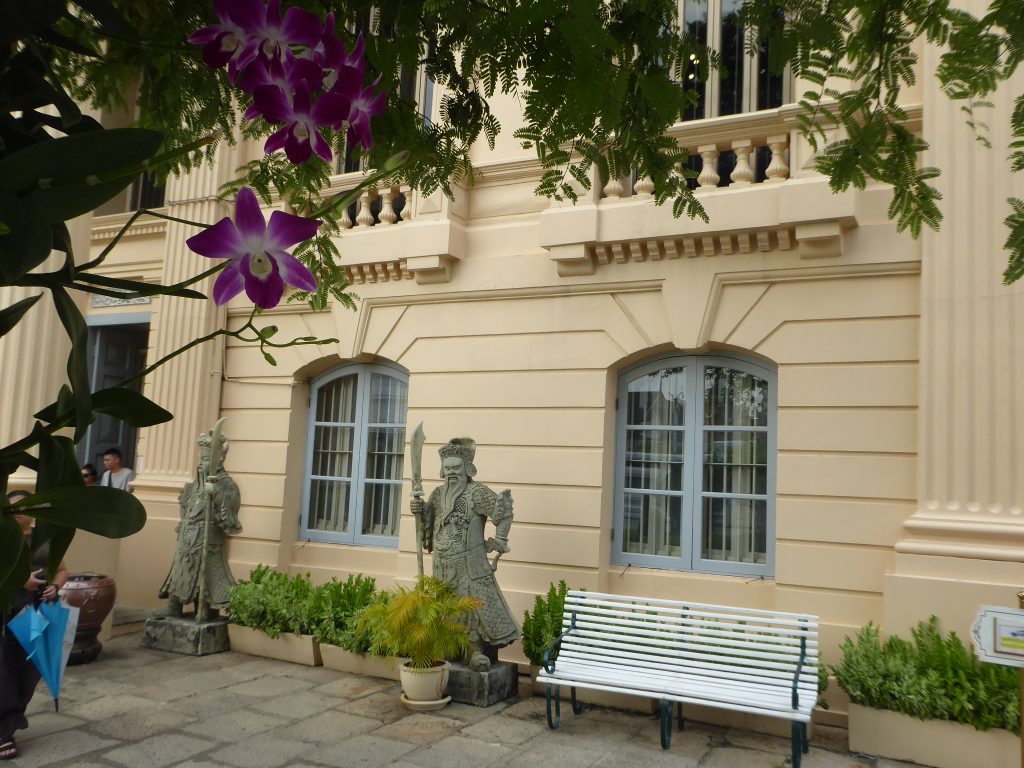
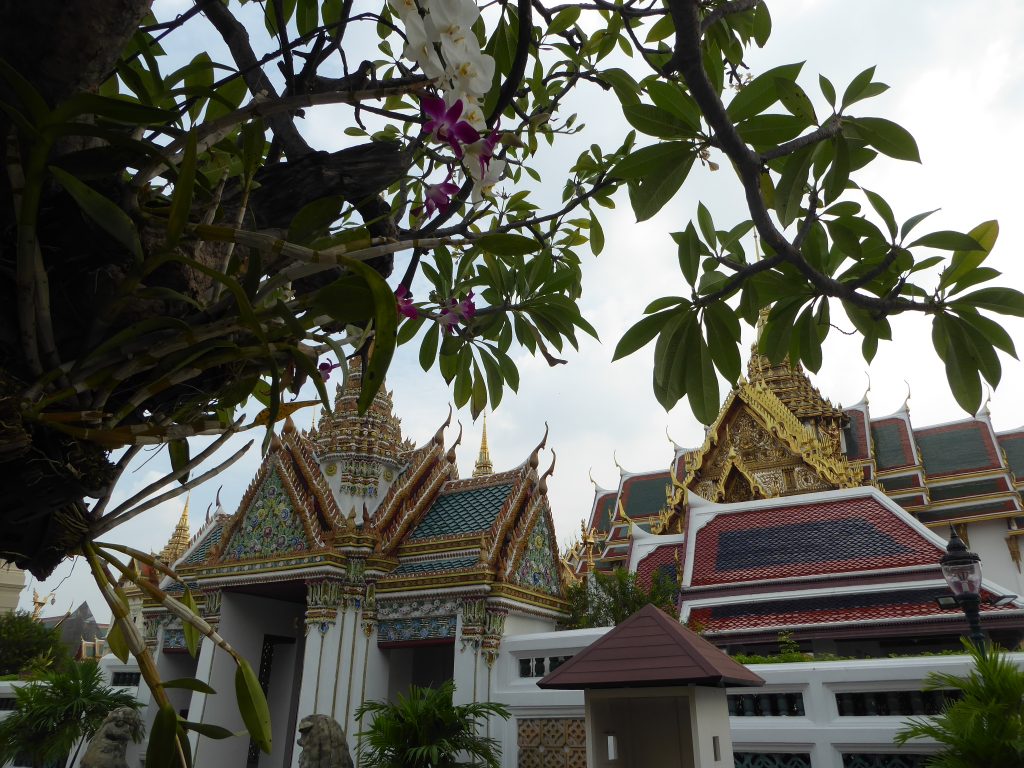
Back in September I volunteered at Lluest Horse & Pony Trust near Llandovery, Brecon Beacon National Park, Wales, for 3 weeks. This great charity rescues mistreated animals, nurtures them back to health, works on behaviour problems and tries to find guardian homes for them. Animals that cannot be rehomed will become permanent residents at Lluest Trust.
They also provide opportunities for people with learning difficulties to acquire skills and mental support from dealing with animals.
I had such a wonderful time there. The team is great, the farmhouse cosy (accommodation provided on site), the animals lovely, the surrounding landscape beautiful.
What a joy it was to be greeted every morning by the horses/ponies in residence. Putting out hay, then on to my favourite job: mucking out the stables. I kid you not. There is something about shovelling shit (literal shit, not some made-up corporate commercial stressy shit), something very simple but satisfying. Your brain shuts off. Your body works. You use muscles you did not need in an office job. Your eyes see a result, a measurable output (how many wheelbarrows full of shit per day). Not to mention being outdoors all day.
I am telling you, forget yoga, try shovelling shit. Good for body and mind.
I arrived just in time for their September Open Day. There was a dog show, a raffle, lots of cakes and sandwiches, photo opportunities with our resident unicorns and much more. A fun day all round.
Next event was a vintage tea party with the four lovely munchkins aka shetland ponies. This was a birthday gift for a 21 year old. Adults, twens and teens were equally excited to groom the ponies than feast while the munchkins did what they do best – munch grass.
On my days off I did trips to the local area: Roman gold mine, Roman amphitheatre in Carmarthen, Tenby, St Davids, and many castles.
Check out their website: lluesthorseandponytrust.co.uk and follow them on Facebook. They deserve your attention and definitely a small donation.
They have a wish list on Amazon. And if you are a coop-member you can chose them as your charity. Lots of ways to do something good.
If you prefer a more hands-on approach, go and volunteer there as well. Help is always welcome. Contact direct or via workaway.net
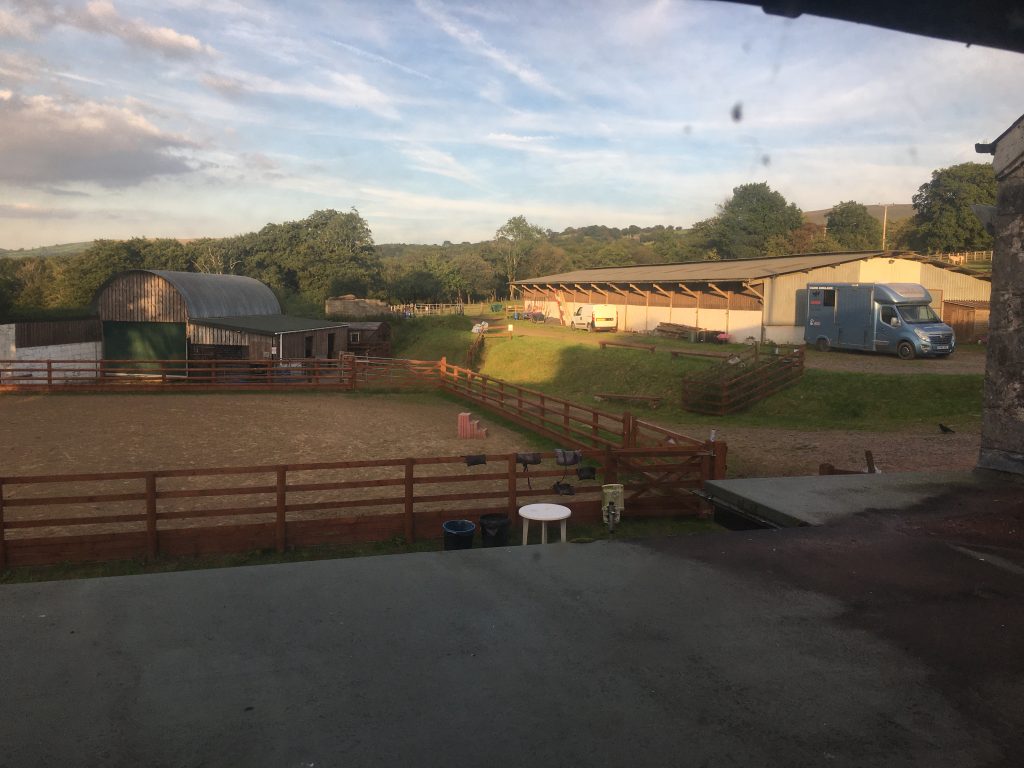
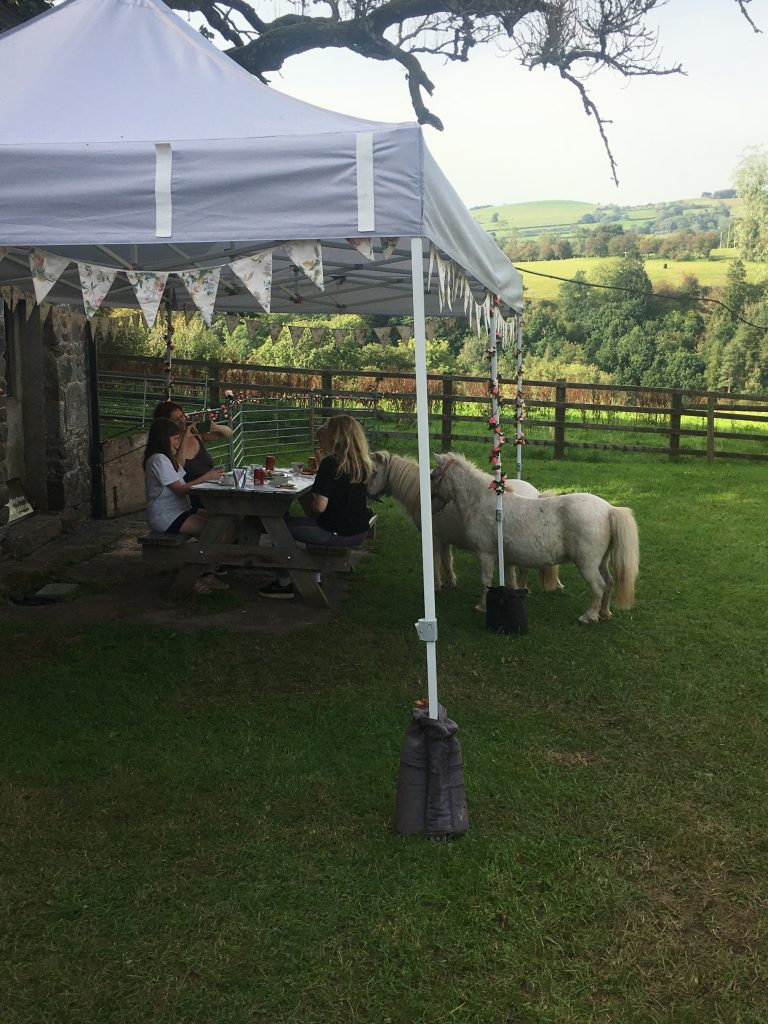
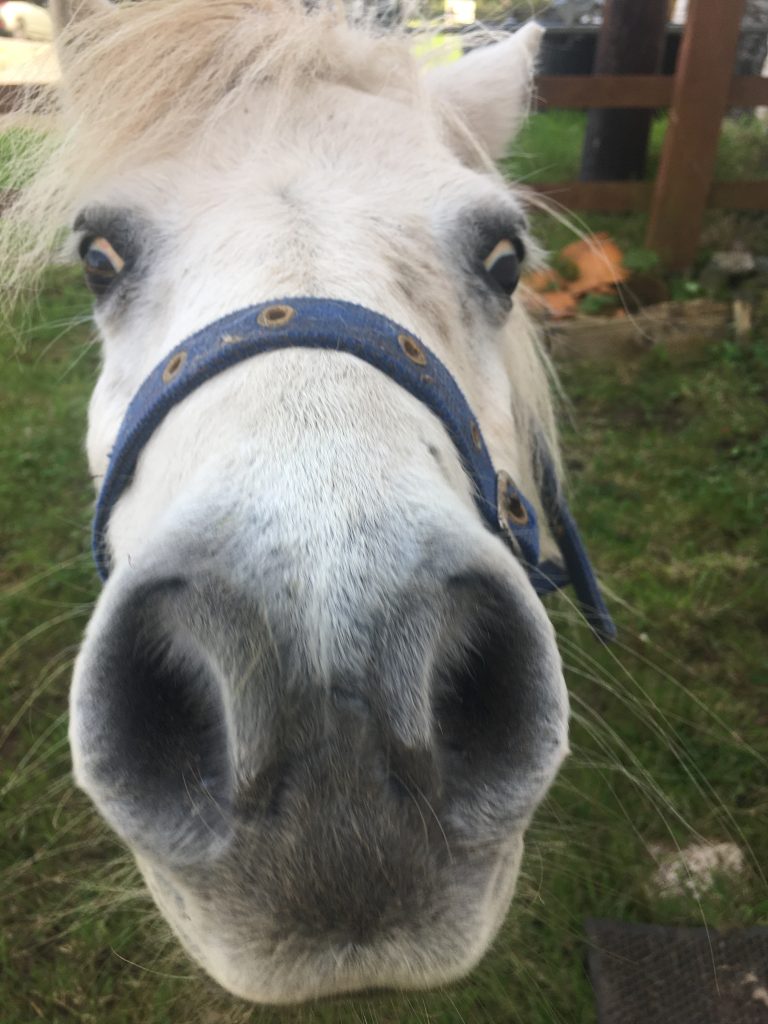
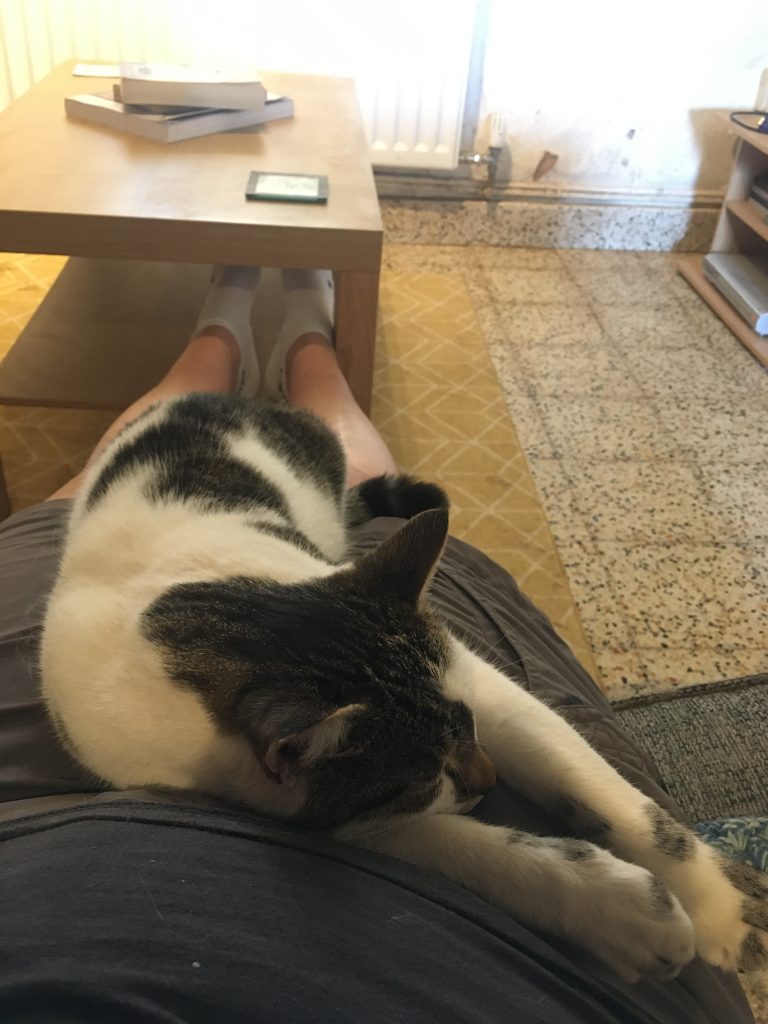
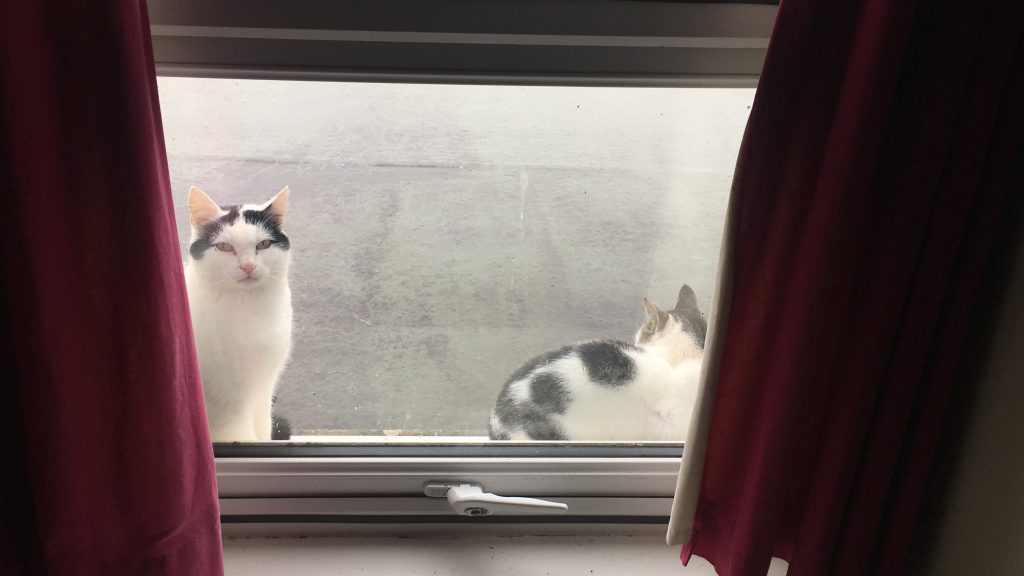
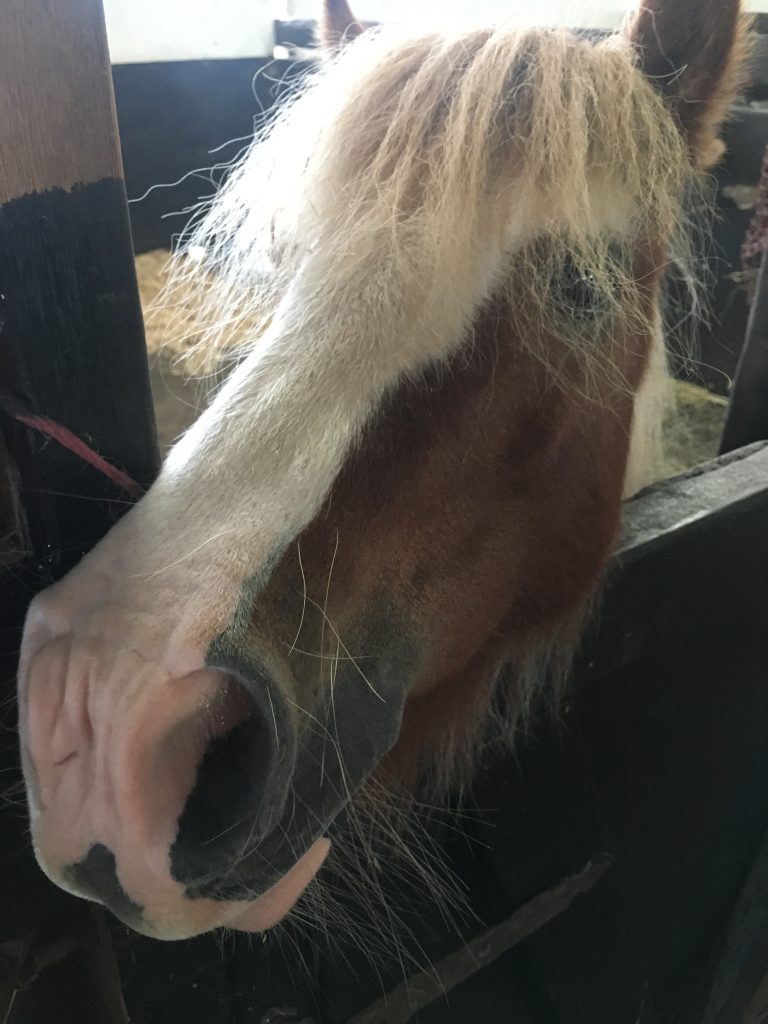
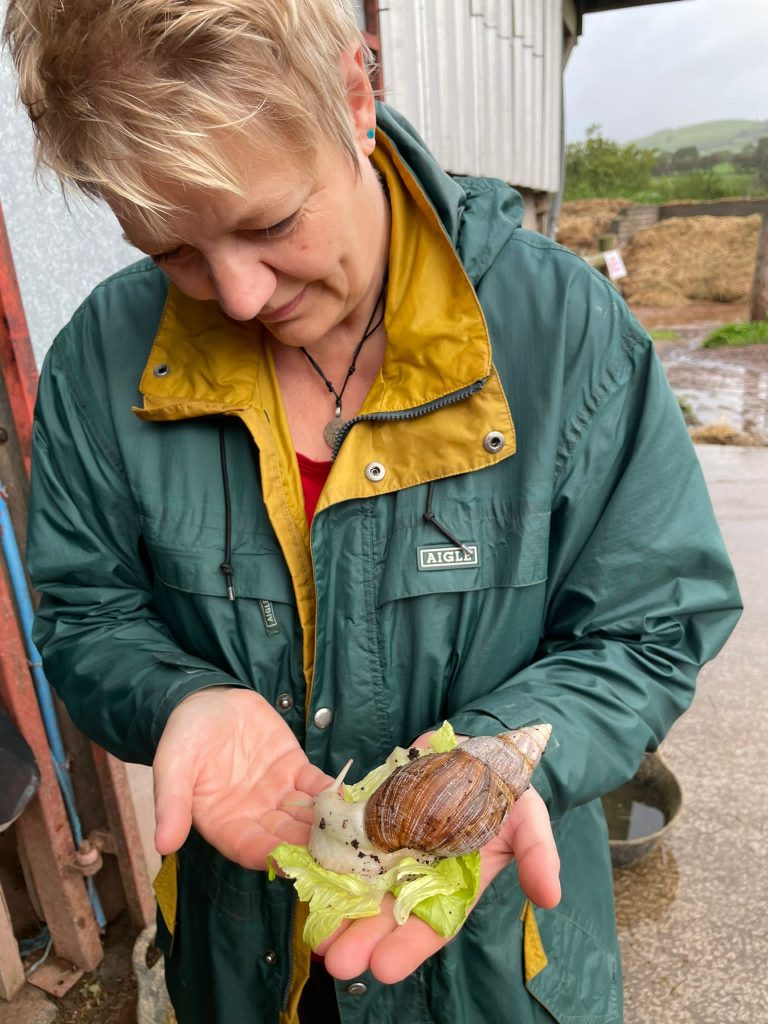
turned out to be not enough. I just loved wandering the streets, looking at the many different temples and having Thai food daily, so in the end, I stayed seven nights.
My hotel was conveniently located only 10 minutes walk across a canal from Khao San with all its markets and bars, but far away enough to be in a quiet area with no drunken tourists.
My deluxe double room was on the 5th floor (thankfully there was an elevator) and featured a kingsize bed, ensuite with toilet and shower separated, an air condition unit and a slim balcony with a nice view over roof tops towards Wat Sam Praya temple and Rama VIII bridge. Staff was very friendly and helpful. Can recommend.
Grand Palace, Golden Mount and Phra Arthit Ferry Port are all within 30 minute walking radius.



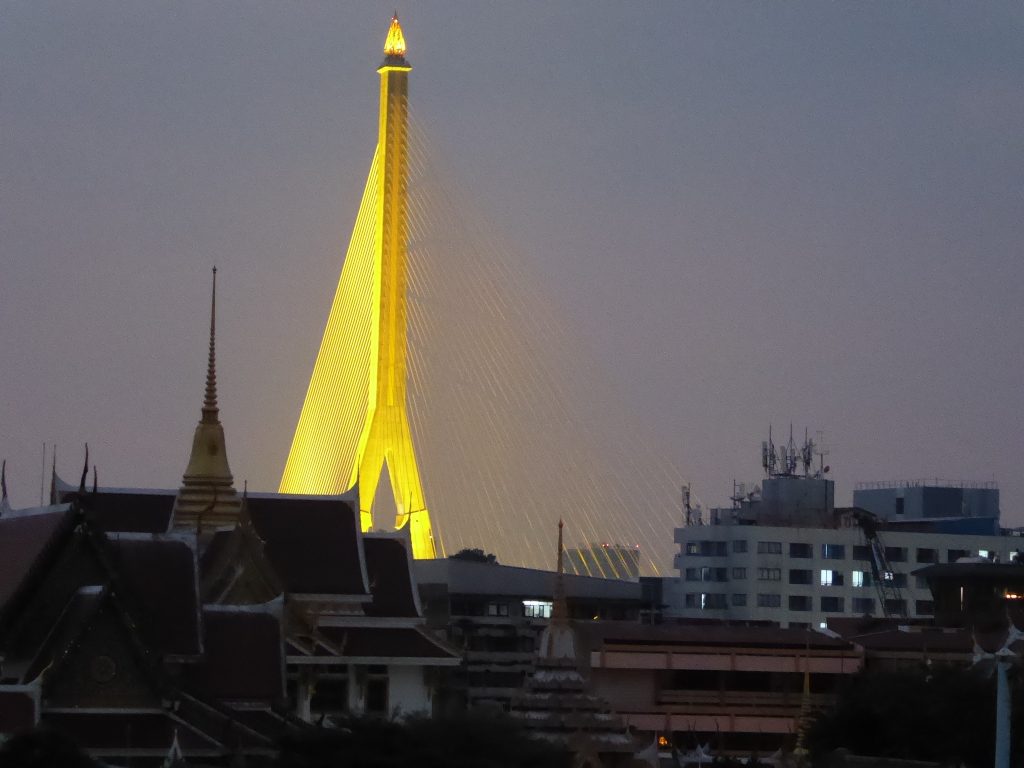
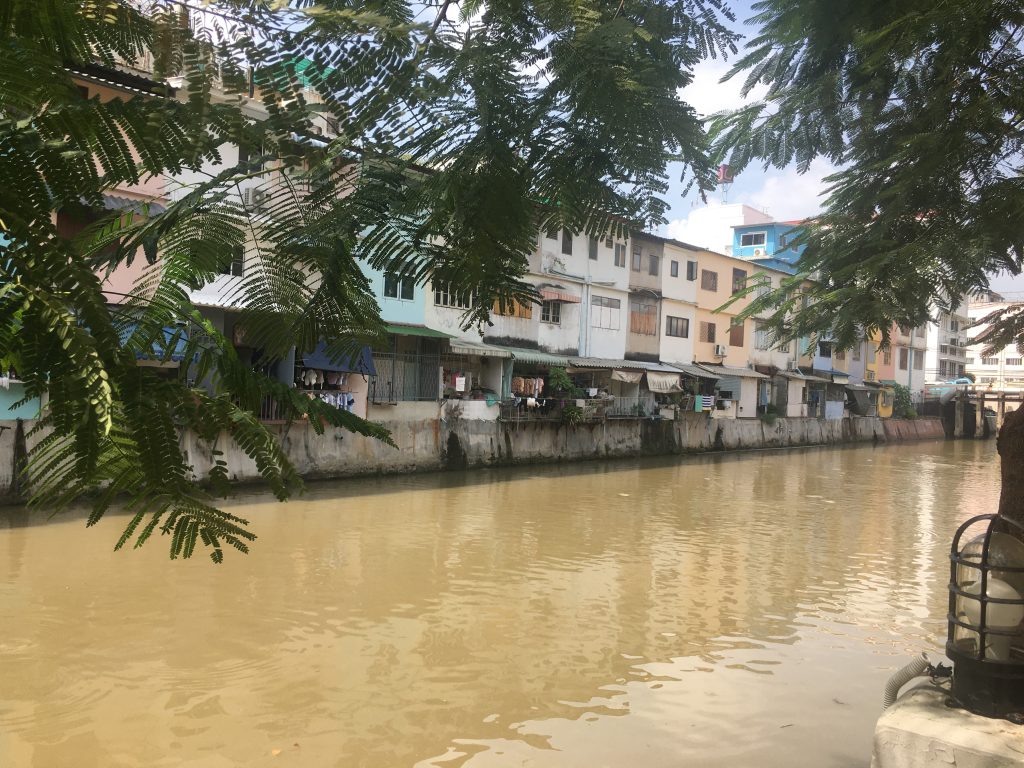
Who does not know a willow on sight, those elegantly slim trees with long, flexible branches?
Did you know there are more than 400 known species of willow, also known as salix? Varieties range from trees to shrubs to creepers. Willows can often be found in parks near ponds or along rivers, making a wonderful, ornamental feature. They are also ideal for keeping waterlogged areas dry.
Thanks to the willow we now have a medicine that revolutionised pain treatments. An acid contained in the sap was the base for the later invented synthetic version known as aspirin. People in the older days would chew or brew the bark to treat fever and pain such as head- or toothache. Now we just conveniently swallow a pill. Worth hugging a tree for, don’t you think? Go on then.
In mythology and literature the willow is often connected with mysticism or life of one sort or the other. In the Northern Hemisphere the willow tree symbolises death or grief, whereas in China the willow stands for immortality and rebirth. In Shakespeare’s “Othello” Desdemona puts her fear and sorrow into “The Willow Song”. Hans Christian Andersen mentions in his story “Under the Willow Tree” an Elder Mother and Willow Father, under which the main character Knut finds solace. Similarities can be found in Disney’s “Pocahontas” where Grandmother Willow, a wise and ancient figure, is depicted as a speaking willow tree. Another famous willow is “The Whomping Willow” from the Harry Potter book series, a tree with attitude, standing tall in the grounds of Hogwarts School of Witchcraft and Wizardry. Other legends tell of witches crafting brooms from willow tree branches.
My favourite variety is the weeping willow due to its very distinctive, roundish shape. During my childhood I had one in front of my bedroom window. I could (and probably did) spent hours just looking at the branches moving like long hair in the wind. The leaves would flick in the breeze, showing their whitish underside. Sunlight would filter through them, bringing the tree to life, mesmerising me. During the flowering period, the tree looked like as if it was wearing curlers – or was inhabited by millions of hairy caterpillars.Caterpillars are pretty but turn creepy if there are more than twenty in one spot, therefore I preferred the curler version. I imagined the willow would have liked to be a corkscrew willow rather than a weeping one. I could relate to that, having had very long straight hair at that time (spaghetti hair as I called it) and was wishing for a mop of curly hair. I got my wish in the 80s but it was more poodle perm than corkscrew. One is never happy with what one has…
If you want to plant a willow close to any structure you have to take into account that they tend to spread their roots everywhere and often close to the surface to get as much water as possible. My willow lifted up the paving alongside our block of flats and of the carpark – a mortal sin. Also the sticky flowers (catkin) would drop on cars and were hard to remove – another mortal sin. I tried to rescue my tree but there is only so much a teenager can do against a chain saw. The front of the house never looked the same after the removal. I rescued two young twigs and just stuck them in the ground at my secret hide-out. They took root and have been growing quite tall since. Sorry, location is still secret.
Willows grow amazingly easy and fast. A reason why they can be grown as hedge and branches can be “harvested” almost yearly for making baskets, furniture or other creations.
Have you ever wanted a handmade wicker basket? Don’t be put off by the price. Just pay for it. I once tried making one myself (with emphasis on “tried”) and I assure you, the money is well spent. Basket making is a skill. So is creating any other willow feature.
On my sightseeing trips through the United Kingdom I came across some astounding art creations in the gardens of the National Trust house “Knightshayes” near Tiverton, Devon.
I recently contacted the local artist and the magnificent creations should to be on display again from Easter onwards. Enjoy!
I often get asked by my contacts in Germany, how I can survive on the British food. Well, actually, pretty good! Believe it or not, the supermarkets do offer similar food, it all just comes down to what you do with it. It is not all fish & chips here. I can still cook Italian pasta or Indian curry or Chinese stir fry or the traditional Sunday Roast with vegetable, potatoes (roasted, not cooked), gravy and – very British – Yorkshire pudding. If you ask me, forget the vegetable, have more Yorkshire puds.
The bread assortment isn’t great and contains more air than sustenance, I’ll give you that, but what the Brits make with it is worth tasting.
The Brits love their sandwiches. The Germans excel in unusual bread loaf varieties such as onion, sesame, spelt, potato, caraway, apple, buttermilk, and poppy seed. The Brits lead in toast varieties: white, Danish white, brown, seeded, half and half, farmhouse, crusty, tiger, malted, sliced thin, medium, thick, extra thick and for difficult kids with no crust.
Order a sandwich in a tea room or restaurant and it will most certainly come with some salad leaves for decoration and crisps on the side. Traditional fillings are egg-mayo, tuna-cucumber, ham-cheese, cheese-pickles, chicken tikka and bacon-lettuce-tomato (blt). For those you have no time for a cooked full English breakfast there is the all-day-breakfast sandwich on the go, a combination of sausage, bacon, egg and ketchup. You won’t taste the toast, it merely serves to hold the filling together. One of my favourites.
For the more adventurous taste buds there is brie with cranberry, hog roast with apple sauce, salmon and cream cheese, chicken-chorizo and roast beef with horseradish.
But the best and most unusual ones you have to assemble yourself.
For a carb overload try Chip Butty: Fresh or cold left-over chips (preferably from a Chinese take-away) between 2 slices of white, buttered bread (not toasted) with ketchup, brown sauce or curry sauce.
I was introduced to this sandwich by a British colleague. I am not a fan of the other carb bomb loved by Brits – baked beans on toast – and therefore was very sceptic about this combination. But one bite and I was converted. Thank you Brad, for expanding my food horizon!
Another interesting sandwich version is the Fish Finger Butty: Yes, you’ve guessed it – fried fish fingers on white, buttered bread (not toasted), often with sauce tartar or ketchup. What’s not to like about that?
Even though originally considered a work-class meal, these two sandwich variations are nowadays rarely found on pub menus. I happen to know that the “Black Boy” pub in Winchester offers Fish Finger Butty. The size of the sandwich was enormous. The pub itself is worth a visit. Every available spots is filled with collections of stuffed animals, bobbins, bottle openers, miniature whisky bottles and stickers (see Table Art 07.12.2015). Visit the toilet and get watched by hundreds of doll’s eyes glued to the ceiling while reading the remarks on the walls. Unusual and hard to forget. I can truly say, this pub has left a lasting impression on me.
What is the first thing that comes to mind when asked “What do you associate with New Zealand?”
Oh yes, sheep, lots of wooly sheep. And after that? Wine? Or maybe Mānuka honey and Hobbits – not necessarily in that combination – but this is material for another post.
Let’s come back to wine. New Zealand is world famous for its wines and they constantly receive premium awards. A wine tasting tour is therefore a Must-Do when in the country.
The signature wine regions are Hawke’s Bay, Marlborough (best for Sauvignon Blanc), Martinborough and Central Otago. Smaller vineyards can be found around Auckland (Villa Maria headquarter), Gisborne and Waipara.
Many tour provider specialise in offering wine tasting with a twist, for example being chauffeured around in a vintage car or on a three-seater-trike, drive a 1960’s Moke or go by bicycle. Each tour provider favours different vineyards but offer bespoke tours as well, for an upgraded price.
 For my wine tasting experience in Hawke’s Bay I opted for a small group tour in a minibus. ‘Vines & Views Wine Tour’ (link below) is the only tour going to Esk Valley, one of the Villa Maria labels. Ross, the tour manager, is a working vineyard manager, and well known at the wineries. Currently he is managing the vineyard at Esk Valley and gave us interesting insight into his duty as well as an exclusive tour of the barrel room and around the facilities, explaining the process of wine making.
For my wine tasting experience in Hawke’s Bay I opted for a small group tour in a minibus. ‘Vines & Views Wine Tour’ (link below) is the only tour going to Esk Valley, one of the Villa Maria labels. Ross, the tour manager, is a working vineyard manager, and well known at the wineries. Currently he is managing the vineyard at Esk Valley and gave us interesting insight into his duty as well as an exclusive tour of the barrel room and around the facilities, explaining the process of wine making.
This vineyard is a little bit outside of Napier which  is why most tours don’t stop here. A mistake, I personally think. The location is stunning and the wine, oh well, I do look happy, don’t I? Esk Valley was our third stop and we had been tasting up to 5 wines at each cellar door.
is why most tours don’t stop here. A mistake, I personally think. The location is stunning and the wine, oh well, I do look happy, don’t I? Esk Valley was our third stop and we had been tasting up to 5 wines at each cellar door.
We first stopped at the Church Road Estate with their open barrel room and the biggest entrance door made of railway sleepers I’ve ever seen (not that there are many around anyway!). Besides tasting beautiful wine you can dine al fresco under parasols. We didn’t see the Wine Museum but I have been told it is worth another visit. Some of the exhibits are said to date back 3,000 years.
Next on the list was New Zealand’s oldest vineyard, the Mission Estate. The former home to monks with its colonial style buildings is nowadays also well known for the summer concerts held on the estate. Starting back in 1993, the event is well received and tickets sell out quickly. No wonder with top head liners like Ray Charles, Dianne Warwick, Shirley Bassey, Engelbert Humperdinck (honestly), Rod Stewart, Tom Jones, Sting, Carol King, Billy Ocean and Eric Clapton, just to name a few.
Our last stop after Esk Valley was Linden Estate, which lies even further away from Napier, again making it very difficult to reach with any other organised tour. I found a 2009 Cabernet Sauvignon here. Exquisite!
Our guide Ross was well received everywhere and had a light banter with the winery hosts, adding to the overall pleasurable experience. To top it all off Ross has an exclusive viewing platform high up on the Esk Valley hills with stunning panorama. The complimentary cheese platter, cracker and another locally produced Sauvignon Blanc were the perfect ending for a splendid tour.
I can only highly recommend Ross and his tour! I am certain, my fellow tasters would agree.
Cheers everyone!
For more information and bookings through the i-site:
Vines & Views Wine Tasting Tour
For a detailled map of all wineries in and around Napier:
Hawke’s Bay Winery Guide
For a self-drive tour through three wine regions:
Classic Wine Trail – self-drive
The greek name for snowdrops is Galanthus. At the moment there are more than 300 known species. Most commonly known is Nivalis. Carpets of wild snowdrop Nivalis can be seen throughout the UK in January and February.
Snowdrops are nearly always found in abbey ruins and graveyards. Norman monks planted them as a symbol of purity but also used them for medicine. Often aconite, petasites and mistletoe can be found alongside snowdrops – they are all attributed with strong healing properties.
I had the privilege to visit a private garden in New Arlesford last week, once holding the national collection of snowdrops. I missed the best of the flower display but there were still more cluster breaking through the soil. I learned that some snowdrop species flower as early as Autumn, others not until March. Snowdrops can be found throughout northern and central Europe, Italy (Sicily), Greece, Turkey, Crimea, Ukraine, Romania, Russia, the Caucasus region, Jordan, Iran and Syria.
Collectors pay top prices for rare bulbs. Thompson & Morgan (Ipswich based seed company) just acquired the world’s most expensive snowdrop in an auction for £725. Galanthus woronowii ‘Elisabeth Harrison’ is a variety with very unusual golden yellow ovary and yellow petal markings. A Galanthus ‘Green Tear’ sold for £360 last year. Who would have thought collecting snowdrops can be so expensive? And we are talking 1 (in words: ONE) tiny bulb.
Two avid collectors were visiting the garden as the same time as me. Between them and the host horticultural names were flying back and forth and all I could contribute was the odd ‘What a dainty flower’ or ‘What different leaves’ and ‘My, that one is tall’. I am not a snowdrop buff – or any type of plant buff for that matter – but I appreciate flora and garden design in all its variety.
For a stunning carpet display in my ‘neighbourhood’ Welford Park in Berkshire was highly recommended to me. From researching the National Trust website it sounds like Anglesey Abbey in Cambridgeshire is the place to go. Of the over 300 varieties, 20 were discovered on site. The 114 acres of gardens with its meandering paths, avenues of trees and a collection of classical statues are dotted with carpets of snowdrops. Sounds like good photo opportunities to me.
For more information on great snowdrop displays in the UK check out these websites:
www.nationaltrust.org.uk
www.welfordpark.co.uk
www.ngs.org.uk
www.healegarden.co.uk – unfortunately due to warm and wet weather their snowdrop walk will not be open in 2016. Official opening on March 3rd for spring bulb displays.